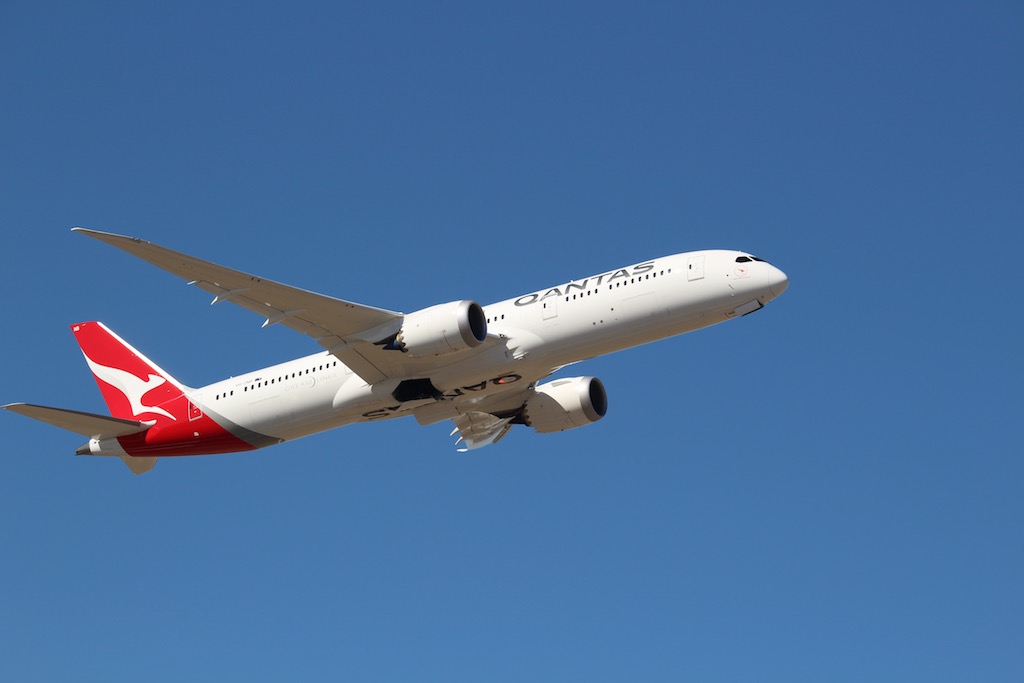Earlier this year, I flew aboard Qantas’ new Boeing 787 non-stop service from London Heathrow to Perth.
I was able to secure a business class frequent flyer redemption booking, for 112,000 points direct with Qantas.
There has been much hype surrounding this new Dreamliner service; with time saving, the comfort of the 787 and the simplicity of flying direct making headlines.
Indeed, time saving is a serious consideration; particularly for time poor business travellers. Having flown to London via Hong Kong and Helsinki (taking 23 hours), the direct flight was a much speedier 16 hours.
Next generation aircraft aren’t unique to Qantas, with flights via popular hubs often allocated to 787s, A350s or A380s; which rival the creature comforts aboard Qantas’ Dreamliner.
With this in mind, does the direct flight live up to the hype?
Since the Qantas and Emirates tieup, the flying kangaroo has provided a dedicated complementary chauffeur service at Heathrow. I was based in Southampton during my UK stay and was delighted to find this service was available, despite being about 100 km away from Heathrow.
This is a considerable time saver, cutting the three-hour train and two-hour bus trip down to just over one hour by car.
Additionally, the drop off location at the terminal entry removes the long subterranean walk required when utilising public transport.
Qantas’ dedicated business class / one world check in adds further convenience, keeping lines short and reducing wait times.
On this day QF10 was delayed by several hours (Qantas had sent a text alert to my registered phone number) and the ground staff kept travellers informed.
The other advantage of business class is using the dedicated Qantas lounge.
The split-level lounge features a gin bar and á la carte dining on the lower level, as well as large buffet and coffee bar on the upper level. There are also luxurious shower rooms and spacious bathrooms with fixtures and fittings that reflect London, including subway tile and British leather.
The lounge manager personally kept travellers updated on the QF10 delay and the lounge is positioned close to the Qantas gates, which is another bonus; reducing the walking time required.

With the exception of first class on the A380, Qantas’ 787-9 offers the airline’s best premium product. Fitted with 42 business suites, the spaciousness of the 787 cabin, along with its huge windows, create a modern travel experience.
Laid out in a 1-2-1 configuration, each seat has aisle access. Amenities include a mattress/cover, large pillow, thick blanket, noise cancelling headphones, amenities kit and menus; with both a dinner menu and a room service style pre-order menu for breakfast.
The seats are large and easily accommodate my 197cm height. Unlike the popular reverse herringbone design (where seats are angled), Qantas’ seats all face forward, offering a few cm of additional space for travellers’ feet while the seat is in bed mode.
During embarkation, the crew busied themselves offering welcome drinks and taking breakfast orders. Hot towels were provided shortly after take-off and the meal service followed. Drinks were accompanied by starters followed by mains and desert.
With 16 hours ahead of us and a late-afternoon departure, there was no need to rush, and the entire food and beverage service took around one and half hours to complete. The food was tasty, the right temperature and well presented.
As the sun set, the cabin lights were dimmed and about five hours into the journey it was time to settle down for the night. The crew were on hand to make up the bed which was very comfortable and eight hours later it was time to wake up after a good night’s sleep.
Breakfast was served in a fast and efficient manner, thanks largely to orders having been taken the night before. After watching a few documentaries on the inflight entertainment system, the aircraft crossed the WA coast.
It was truly surprising just how fast the trip felt, seeming comparable to the shorter Hong Kong – Helsinki route I had flown just a week before.
The aircraft parked at the newly upgraded T3 in Perth. With only one aerobridge disembarkation was slower than at dual-airbridge terminals.
Once in the terminal about half the passengers headed to the T3 transit lounge for the onward journey to Melbourne while the rest of us passed through immigration. The layout is a bit confusing, but guides are on hand to direct people to the right area.
T3’s immigration is currently fully manual, with no e-passport readers. Despite this, I passed through quickly and within a few minutes my bag was on the carousel and I was ready to go.
The direct link between Britain and Australia has truly shrunk the globe. The time saving benefits cannot be underestimated; and have been built into multiple aspects of the experience; from travelling to the airport; to the lounge; as well as the speed of the flight itself.
Qantas’ Dreamliner has successfully reduced the tyranny of distance and has helped make the world more accessible to Australians in the same vein as its Qantas predecessors; the iconic Constellation, Boeing 707 and 747.
































